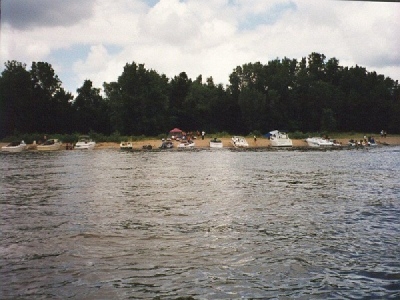
Posted on September 5, 2018
Mankind and Mother Nature disagree on where the Mississippi River should flow. Mankind believes the river should be controlled, whereas, Mother Nature believes it should be free flowing. This disagreement between two dominant life forces is apparent in our river community.
Mankind decided that the Mississippi River should be controlled to provide for commercial transportation, public recreation, flood protection and civil works projects. To accomplish this, a nine-foot navigation channel was approved by Congress in 1930 that constructed an extensive lock and dam system on the Upper Mississippi River to provide adequate water depth for modern day barge transportation.
Mother Nature silently tolerated mankind’s approach to control the river. She sadly watched as backwaters were closed, the river channel was straightened, and a massive engineering project was completed. Mother Nature challenged these river training structures with the great floods of 1965, 1993 and 2001.
This spring and summer, river levels have been several feet higher than normal with strong river currents, great amounts of floating debris including large trees, and mud stained water. Public recreation and tourism were impacted because the beautiful sand beaches were submerged. Popular gathering spots like Coney Beach, Princeton Beach and Santa Fe Beach were underwater during June, July and early September. Recreational businesses, such as boat repair, marine gasoline, and fishing related equipment experienced a slump in sales.
The Mississippi River is one of our nation’s busiest marine highways. Commercial barge traffic was impacted when the water receded because Mother Nature had deposited several feet of sand on the river bottom in the navigation channel. The channel area between Beaver Island and Coney Beach is a historic area of sand deposition due to its geographic location related to river flow. In 2013, the Corps of Engineers dredged 31,000 cubic yards of sand from this channel area and placed it on Coney Beach.
In early September, the navigation channel adjacent to Coney Beach was only eight feet deep causing barges to run aground. The Coast Guard moved the channel buoys closer to the Iowa side to temporarily guide tow boats to deeper water.
Wildlife biologists from the Corps of Engineers, U.S. Fish and Wildlife Service and Iowa Department of Natural Resources were called in to survey the shallow water area lying adjacent the Coney Beach shoreline to search for the presence of mussels, a requirement prior to dredging. Six species of mussels were located but few individuals were present and no state or federal listed threatened or endangered species were identified.
Biological clearance was given to the Corps of Engineers to dredge this navigation channel area. However, the dredging operation was delayed for three weeks due to the dredge boat being utilized at other Mississippi River areas also experiencing barge groundings. Dredging operations began Aug. 28 with the projected placement of 12,000 cubic yards of sand on Coney Beach. Dredge operations were suspended for the Labor Day weekend, so that beach goers can enjoy this popular shoreline area.
Mankind and Mother Nature will continue to compete for flowage rights on the Mississippi River. This competition will intensify in the future as we experience increased rainfall events and flash floods within the watershed. As a river community, we enjoy the many benefits of this great natural resource but also have to be resilient in accepting the reality that Mother Nature is a challenge to mankind’s control of the Mississippi River.
Source: Clinton Herald





